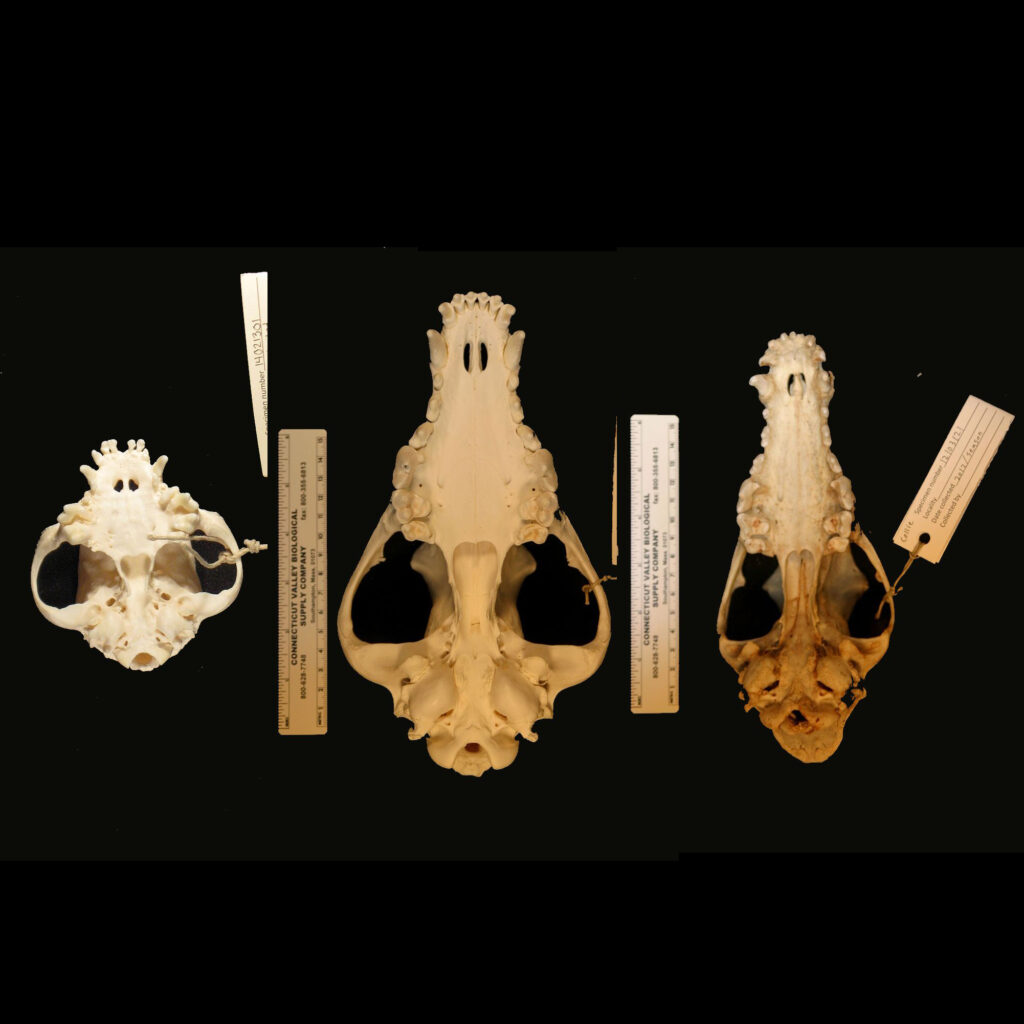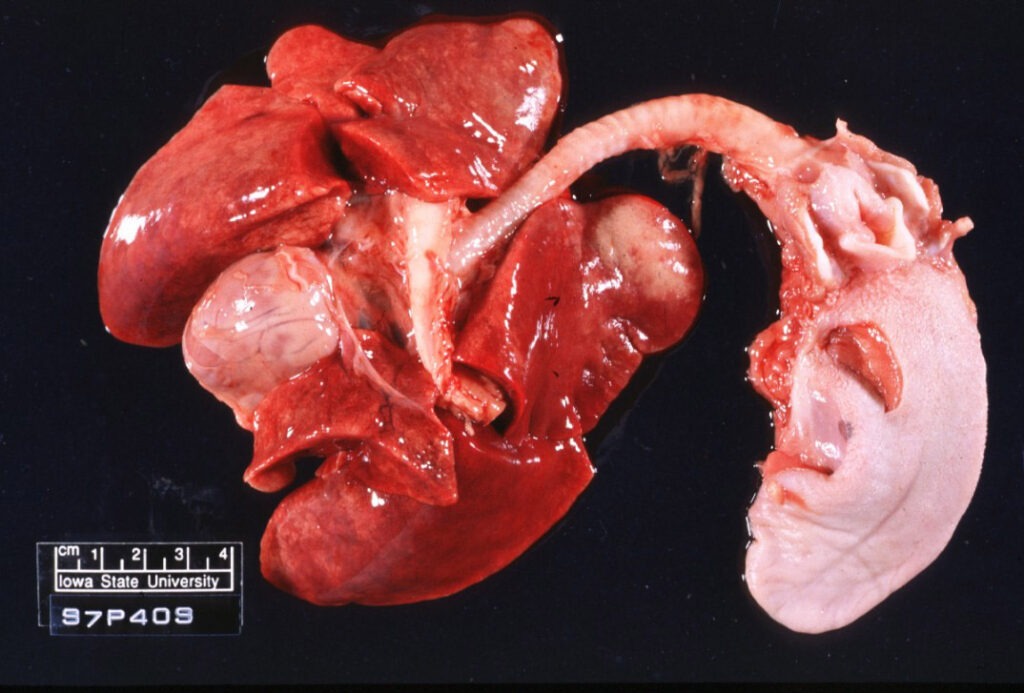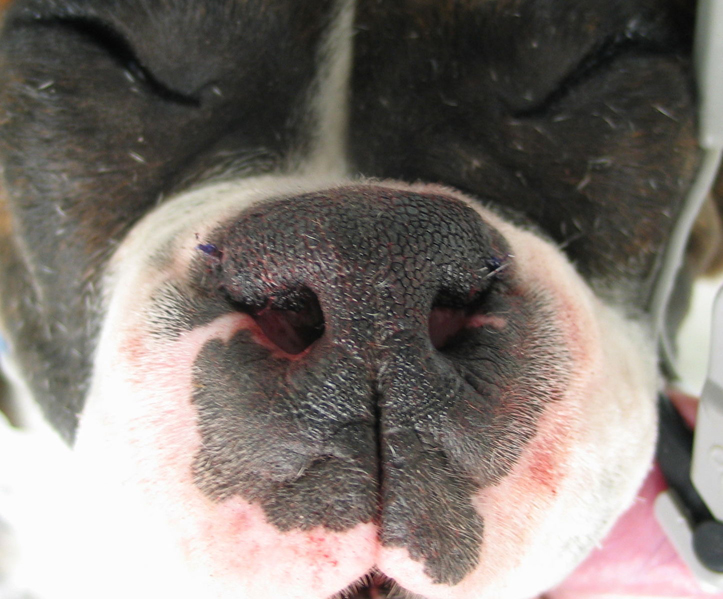




Today’s path rounds are on 𝐛𝐫𝐚𝐜𝐡𝐲𝐜𝐞𝐩𝐡𝐚𝐥𝐢𝐜 𝐚𝐢𝐫𝐰𝐚𝐲 𝐬𝐲𝐧𝐝𝐫𝐨𝐦𝐞!
𝐖𝐡𝐚𝐭 𝐢𝐬 𝐢𝐭?
𝐁𝐫𝐚𝐜𝐡𝐲𝐜𝐞𝐩𝐡𝐚𝐥𝐢𝐜 𝐚𝐢𝐫𝐰𝐚𝐲 𝐬𝐲𝐧𝐝𝐫𝐨𝐦𝐞 is a group of issues that are very common in 𝐛𝐫𝐚𝐜𝐡𝐲𝐜𝐞𝐩𝐡𝐚𝐥𝐢𝐜𝐬 (short-nosed) breeds of dogs and cats. These issues affect the animal’s ability to breathe.
𝐖𝐡𝐨 𝐠𝐞𝐭𝐬 𝐢𝐭?
We see this condition in short-nosed dogs and cats, like Pugs, Boxers, Persian cats, etc. However, we most commonly see it in dogs.
𝐖𝐡𝐚𝐭 𝐜𝐚𝐮𝐬𝐞𝐬 𝐢𝐭?
These lesions are thought to have arisen as breeders selected animals with shorter and shorter noses, to develop the desired breed characteristics. The characteristic lesions of BAS are 𝐭𝐫𝐚𝐜𝐡𝐞𝐚𝐥 𝐡𝐲𝐩𝐨𝐩𝐥𝐚𝐬𝐢𝐚 (thin, floppy airway), 𝐞𝐥𝐨𝐧𝐠𝐚𝐭𝐞𝐝 𝐬𝐨𝐟𝐭 𝐩𝐚𝐥𝐚𝐭𝐞 (long floppy soft palate that blocks airflow) and 𝐬𝐭𝐞𝐧𝐨𝐭𝐢𝐜 𝐧𝐚𝐫𝐞𝐬 (tiny nostrils).
𝐖𝐡𝐲 𝐢𝐬 𝐭𝐡𝐢𝐬 𝐚 𝐩𝐫𝐨𝐛𝐥𝐞𝐦?
All of these lesions produce physical blockages to airflow, and often gives these animals a 𝐬𝐭𝐞𝐫𝐭𝐨𝐫𝐨𝐮𝐬 respiratory noise (snoring). Obviously this can be a pretty big problem! These animals are prone to 𝐞𝐱𝐞𝐫𝐜𝐢𝐬𝐞 𝐢𝐧𝐭𝐨𝐥𝐞𝐫𝐚𝐧𝐜𝐞, 𝐝𝐲𝐬𝐩𝐧𝐞𝐚 (difficulty breathing) and may require supplemental oxygen when stressed.
𝐇𝐨𝐰 𝐢𝐬 𝐢𝐭 𝐝𝐢𝐚𝐠𝐧𝐨𝐬𝐞𝐝?
Stenotic nares are pretty easy to diagnose, since they are on the outside of the dog! For tracheal hypoplasia and elongated soft palate, more invasive procedures are needed. An elongated soft palate can be diagnosed by 𝐥𝐚𝐫𝐲𝐧𝐠𝐞𝐚𝐥 𝐞𝐱𝐚𝐦𝐢𝐧𝐚𝐭𝐢𝐨𝐧 under anesthesia, while diagnosing tracheal hypoplasia may require X-rays or ultrasound.
𝐇𝐨𝐰 𝐢𝐬 𝐢𝐭 𝐭𝐫𝐞𝐚𝐭𝐞𝐝?
Most of the treatment for BAS involves surgical procedures. For example, stenotic nares are treated by removing some of the extra tissue blocking the nostril. Similarly, elongated soft palate can be treated by removing a portion of the soft palate. These procedures are often combined with weight loss, to help reduce fatty tissue around the airways. In very severe cases, these animals may require a permanent 𝐭𝐫𝐚𝐜𝐡𝐞𝐨𝐬𝐭𝐨𝐦𝐲, which is a hole in the trachea that allows the animal to breathe by bypassing the entire upper respiratory system.
𝐏𝐡𝐨𝐭𝐨𝐬
1) A brachycephalic dog skull next to a 𝐦𝐞𝐬𝐨𝐜𝐞𝐩𝐡𝐚𝐥𝐢𝐜 (middle-lengthed nose) and a 𝐝𝐨𝐥𝐢𝐨𝐜𝐡𝐨𝐜𝐞𝐩𝐡𝐚𝐥𝐢𝐜 (long-nosed) skull.
2) A very skinny, floppy hypoplastic trachea.
3) A very long soft palate blocking the airway.
4-5) Stenotic nares before and after surgery!
𝐒𝐨𝐮𝐫𝐜𝐞𝐬
Maxie, G. Jubb, Kennedy and Palmer’s Pathology of Domestic Animals, Volume 2. Sixth Edition.
Monnet E. Brachycephalic Airway Syndrome. World Small Animal Veterinary Association World Congress Proceedings, 2004.
Photo 1 © Wikimedia Commons contributor Dmccabe licensed under CC 4.0 International, edited to show only 3 skulls.
Photos 2-3 © Noah’s Arkive contributors King, Ward, Acland licensed under CC BY-SA 4.0.
Photos 4-5 © Wikimedia Commons contributor Gatorvet01 licensed under CC 3.0 Share-Alike.




